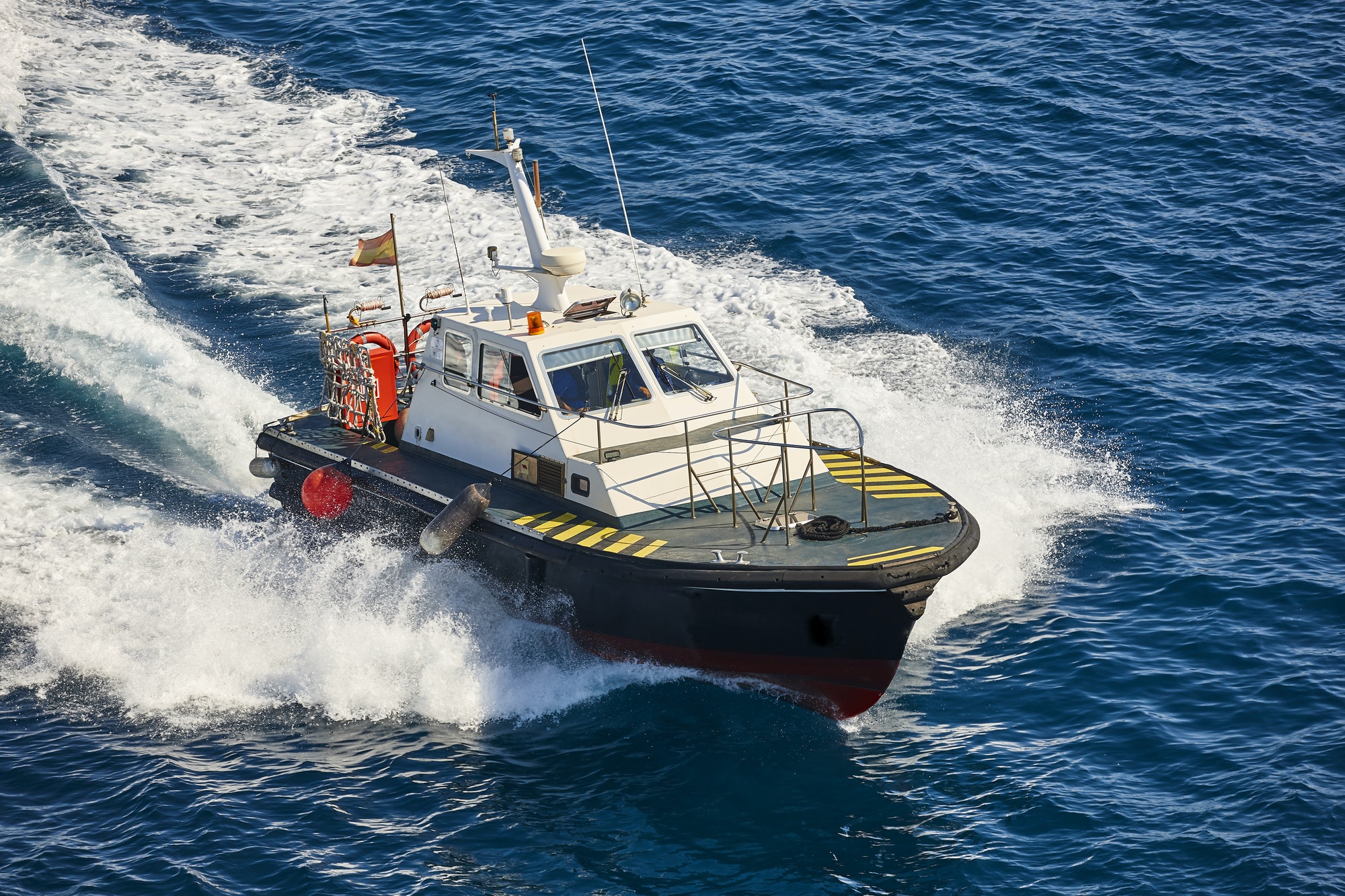What Advances in Autonomous Marine Vessels Are Changing the Landscape of Ocean Research?

The rise of automation has been instrumental in various sectors, ranging from manufacturing to transportation. However, the maritime industry has also seen significant gains from this trend. With the advent of autonomous marine vessels, we are witnessing a paradigm shift in ocean exploration and research. The use of autonomous systems is not just enhancing operational efficiencies but also ensuring safety and comprehensive data collection, paving the way for a new era in maritime research. In this article, we explore the technological advances that are propelling these transformations and changing the landscape of marine and oceanic research.
The Increasing Use of Autonomous Ships in Marine Research
Autonomous ships or unmanned vehicles are becoming more prevalent in the maritime industry. These ships use advanced technologies and systems to operate without any human intervention. This section will delve into the specifics of how they contribute to ocean research.
Lire également : How Is AI Being Applied to Optimize Recycling Processes in the UK?
Autonomous vessels are equipped with various technologies such as radar, lidar, infrared cameras, and GPS. These technologies help in navigating the vessel, avoiding obstacles, and collecting valuable data. The use of these ships in research has opened up new opportunities for exploring the remote and harsh environments of the world’s oceans.
For instance, in the Pacific Ocean, autonomous systems are used to study seismic activity and marine ecosystems. These systems can operate in challenging conditions, enabling scientists to gain insights that were previously unattainable. Moreover, the real-time data collected by these vessels is crucial in tracking and predicting climate change.
A voir aussi : How Are Nanosensors Advancing the Capabilities of Smart Home Security Systems?
Autonomous ships also reduce the risk associated with human operations. They can work non-stop for days, even in harsh weather conditions, ensuring uninterrupted data collection. These vessels also reduce the cost associated with human crew, making them economically efficient.
The Role of Safety Technologies in Autonomous Marine Systems
Safety is a paramount concern in maritime operations. This section will explore how safety technologies are integrated into autonomous marine systems.
Safety technologies play a significant role in the operation of autonomous vessels. These technologies are designed to prevent accidents and ensure the reliable operation of the systems. For instance, collision avoidance systems use radar and lidar to detect obstacles and adjust the ship’s course accordingly. This technology is crucial in preventing accidents and ensuring the safety of the vessel and the environment.
Moreover, autonomous vessels use advanced navigation technologies. These technologies include GPS and inertial navigation systems, which help in accurate positioning and path planning. This ensures the vessel stays on the predetermined course, preventing it from straying into dangerous waters or restricted zones.
In addition to navigation and collision avoidance, autonomous vessels also use technologies for monitoring the health of the system. This includes sensors and software that monitor the vessel’s engines, electrical systems, and other critical components. These technologies allow for predictive maintenance, reducing the risk of system failure and enhancing the reliability of the vessel.
Implications of Autonomous Vessels for the Maritime Industry
The maritime industry is on the cusp of a significant transformation, thanks to the advent of autonomous vessels. This section will evaluate the implications of these changes for the industry.
The growing adoption of autonomous vessels is likely to have profound implications for the maritime industry. For starters, it will change the nature of jobs in the industry. With automation taking over many tasks, maritime professionals will need to adapt and acquire new skills related to operating and maintaining autonomous systems.
Autonomous vessels will also lead to cost savings in the long run. While the upfront cost of these vessels may be high, the savings from reduced crew costs, increased operational efficiency, and reduced accident-related costs will offset these initial investments.
Furthermore, the use of autonomous vessels in research is unlocking new possibilities and opportunities. By harnessing the capabilities of these vessels, researchers can expand their horizons and delve into unexplored areas of the ocean. This will facilitate the discovery of new marine species, geological formations, and potentially valuable resources.
The Future of Autonomous Marine Exploration
The field of autonomous marine exploration is still in its nascent stages, with much potential yet to be tapped. This section will speculate on the prospects of this area in the future.
The future of autonomous marine exploration holds much promise. As technology continues to advance, autonomous vessels will become even more sophisticated and capable. For instance, advances in AI and machine learning will enable these vessels to make autonomous decisions based on real-time data. This will enhance their ability to adapt to changing conditions and execute complex missions.
Moreover, as technology becomes more accessible and affordable, autonomous vessels will be deployed more widely. This will boost data collection and research efforts, leading to significant advancements in our understanding of the world’s oceans.
Despite the promising future, there are also challenges that need to be addressed. These include regulatory issues, technical challenges, and societal concerns about automation and job losses. However, with continuous innovation and responsible implementation, these challenges can be overcome. The potential benefits of autonomous marine exploration – from enhancing our understanding of the oceans to improving maritime safety and efficiency – make it a pursuit worthy of our best efforts.
Autonomous Marine Vessels and Deep Sea Exploration
The advent of autonomous marine vessels has paved the way for unprecedented exploration of the ocean depths. This section will examine how autonomous vessels are transforming deep-sea exploration.
Deep sea exploration is a challenging and costly endeavor due to numerous factors such as extreme pressure, freezing temperatures, and inaccessibility. Traditional manned submersibles are restricted by their operational depth and the physical toll it takes on humans. Autonomous underwater vessels, however, overcome these limitations, enabling extensive exploration of the deep sea.
One such example is the NOAA ship Okeanos Explorer, a pioneering vessel in autonomous maritime operations. Equipped with state-of-the-art sonar systems and remotely operated vehicles (ROVs), the Okeanos Explorer maps the seafloor and captures high-resolution images of the marine life and geological formations, providing invaluable data to researchers worldwide in real-time.
Autonomous vessels are not limited to data collection; they also play a crucial role in conservation efforts. For instance, marine reserves in the Pacific Ocean are monitored by autonomous ships to track the health of marine ecosystems and to observe changes over time, thereby informing conservation strategies.
By reducing the risks and costs associated with human presence, autonomous ships are making deep-sea exploration more achievable and sustainable. They are unlocking secrets of the ocean, enhancing our understanding of marine biodiversity, and opening up new avenues for scientific discovery.
Conclusion: The future of Maritime Research with Autonomous Ships
As the field of autonomous marine exploration evolves, the maritime industry and oceanic research stand to gain immensely. This section will offer a conclusion on the transformative impacts of autonomous vessels on maritime research.
The integration of autonomous vessels into maritime operations marks a significant milestone in ocean exploration. By leveraging advanced technologies such as AI, machine learning, and real-time data analysis, these vessels are enriching maritime research and conservation, and fostering a new era for the maritime industry.
The ability of autonomous ships to work continuously in harsh conditions, collect comprehensive data, and dramatically reduce human-associated risks and costs is revolutionizing oceanographic research like never before. With vessels such as the NOAA’s Okeanos Explorer, the once inaccessible parts of the deep sea are now within our reach.
However, the widespread adoption of autonomous maritime operations also brings challenges. Regulatory frameworks need to evolve to accommodate this new technology. Further, the potential job losses due to automation need to be addressed. Yet, the potential benefits – from unlocking the ocean’s mysteries to improving maritime safety and efficiency – certainly make the pursuit worthwhile.
Looking forward, the future of autonomous marine exploration is promising. As technology improves, so will the capabilities of autonomous vessels, unlocking even more opportunities for discovery and understanding. With continuous innovation and responsible application, autonomous marine vessels will continue to change the landscape of ocean research for the better.
